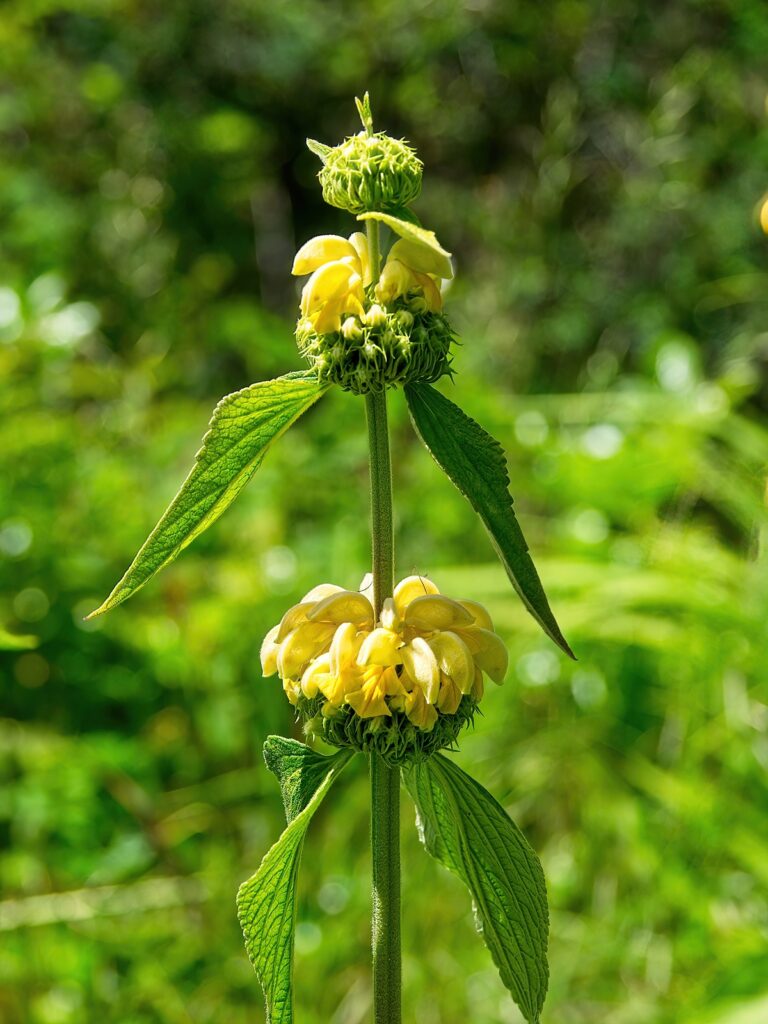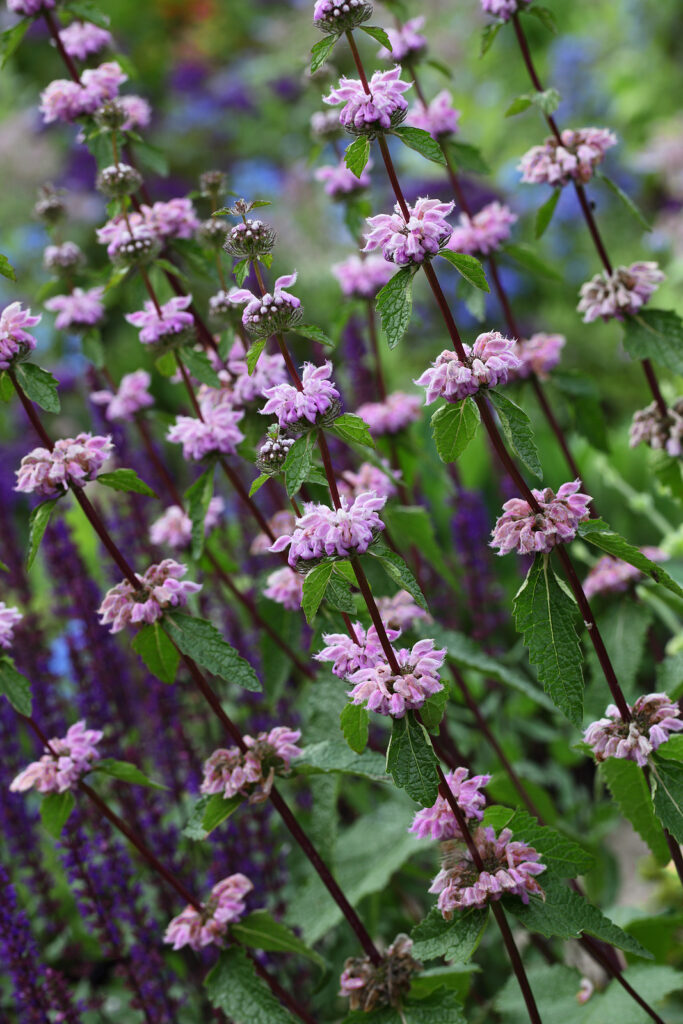Phlomis–often called Jerusalem sage– are evergreen perennials and small shrubs that bear dense whorls or tiers of tubular, two-lipped flowers. The often hooded flowers are white, yellow, or pink.
Phlomis are somewhat sagelike. Like sage, they are especially showy massed in borders. Phlomis should be grown in full sun and average to fertile well-drained soil. Phlomis will tolerate drought but grows best with slightly moist soil.
Phlomis is a genus of about 100 species of perennials and evergreen shrubs. Phlomis is native to rocky sites around the Mediterranean.
Get to know Phlomis
- Plant type: Perennials or shrubby perennials
- Growing zones and range: Zones 4 to 9
- Hardiness: Hardy to Zone 8; plants are killed to the ground in Zone 7 and colder but they will come back in spring.
- Height and width: 3 to 4 feet (1-1.2m) tall and 3 to 6 feet (1-2m) wide
- Foliage: Opposite, lance shaped to ovate, gray-green in color, and often covered with hairs.
- Flowers: Showy, tubular, two-lipped often hooded white, yellow, or lilac
- Bloom time: Late spring and early summer
- Uses: Mixed border
- Common name: Jerusalem sage
- Botanical name: Phlomis
- Family name: Lamiaceae (Labiatae)
- Origin: Mediterranean

Where to plant Phlomis
- Plant Phlomis in full sun.
- Plant Plomis in average to rich-well-drained soil.
When to plant Phlomis
- Set container-grown Phlomis in the garden in spring or autumn.
Planting and spacing Phlomis
- Space Phlomis 3 feet (1m) or more apart.
How to water and feed Phlomis
- Phlomis grow best with moderate water; keep the soil just moist.
- Fertilize Phlomis with an all-purpose, slow-release organic fertilizer in spring.
Phlomis care
- Phlomis will produce several waves of bloom if deadheaded or cut back after each flowering.
- Cut Phlomis back by half in autumn to keep plants compact.
Phlomis pests and diseases
- Leafhoppers may attack Phlomis.
- Phlomis is not frequently bothered by disease.

Phlomis propagation
- Sow Phlomis seed in warm soil in spring.
- Divide Phlomis in spring and autumn.
- Take softwood cuttings of shrub species in summer.
Phlomis varieties to grow
- Phlomis fruticosa. Jerusalem sage. Mounding 3- to 4-foot-tall shrub that spreads from 4 to 5 feet; bears gray-green leaves that are woolly underneath; erect stems have dense whorls of golden yellow 1 ¼-inch-long flowers that appear in ball-shaped whorls from early to midsummer.
- P. lanata. Dense, compact, shrubby plant grows to 2 ½ feet tall and 30 inches wide, with 1-inch woolly, wrinkled leaves and whorls of ½-inch golden summer flowers covered with brown hairs.. Nearly everblooming if old, faded stems are cut out. Z
- P. russeliana. Jerusalem sage. Perennial grows to 3-foot-tall and 3-foot-wide; clumps of hairy, ovate leaves; erect stems with dense whorls of butter yellow, hooded, 1- to 1 ½-inch-long flowers from late spring to early fall. ‘Edward Bowles’, a hybrid between this species and P. fruticosa, bears large gray-green leaves and whorls of sulfur yellow 1 ¼-inch-long flower in early to midsummer.
- P. samia. Similar to P. russelliana, but with purplish pink flowers.
- P. tuberosa. Perennial grows 4 to 5 feet tall and spreads 3 to 4 feet wide; bears whorls of purplish pink ¾-to 1-inch-long flowers in summer.



